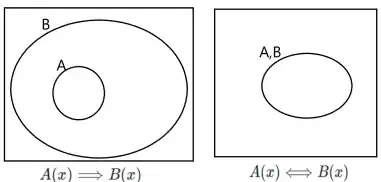I'm wondering why when $n$ is even we always assume the positive root for $\sqrt[n]{}.$ For example, if we have $x = \sqrt{4}$, we always assume $x = 2$. Yet when we have $x^2 = 4,$ we write $x = \pm\sqrt{4} \Longrightarrow x = -2, 2$.
The problem is that if I take the 1st equation, and square both sides, I get $$x = \sqrt{4} \Longrightarrow x^2 = 4 \Longrightarrow x = \pm\sqrt{4} \Longrightarrow x = -2, 2$$ My teacher says that if you introduce the radical sign, use $\pm$, but those two equations are the same under the rules about radicals she taught us, so the "taking the positive root" rule feels arbitrary to me. I get that people want to make the radical mean something without ambiguity, but making arbitrary rules, like taking just the positive answer, seems to confuse things and lead to inconsistency, like in the above.
There are other examples, such as solving for $x$, then substituting the original equation with the value of $x$, and not getting it to work because you can only take the positive root.
For things like the Pythagorean theorem, people like to say it's obvious to take the positive one only, but there are ways to represent the Pythagorean theorem without relying on human judgement to decipher the final answer. Say you have a right triangle with legs $a=3$, $b=4$, and you want to find c. So you do: $3^2 + 4^2 = c^2$, $c > 0$. and solve the systems of equations, just like any other: $c = \pm\sqrt{25} \Longrightarrow c = -5, 5$. $c = -5, 5$ intersects $c > 0$ at $c = 5$, so the answer is $c = 5$. I don't see why you would need to redefine square root: $\pm\sqrt{}$ to mean principal square root: $\sqrt{}$ to find the correct answer.
Does the "taking the positive root" rule have something to do with imaginary numbers, or am I missing something? (I am not asking if $\sqrt{}$ means positive, I'm asking why.)
